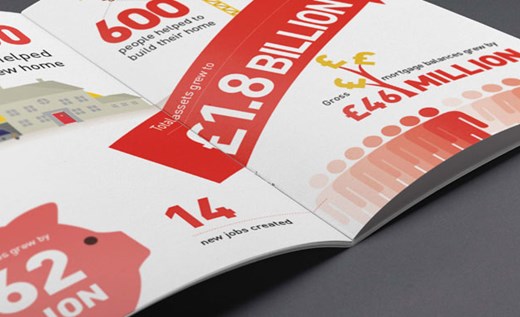Latest Ulster University House Price Index shows strong demand continues across NI, despite growing uncertainties
House prices are continuing to rise as demand grows across Northern Ireland despite rising inflation and living costs, according to the latest research from Ulster University.
House prices are continuing to rise as demand grows across Northern Ireland despite rising inflation and living costs, according to the latest research from Ulster University.
Findings from the Quarterly House Price Index show a price growth of 2.3% for the first quarter of 2022, with annual price increases equating to 9.7%. The overall average price of residential property in NI now stands at £202,325, as high viewing levels continue to drive a spike in agreed sales.
Despite this market buoyancy, housing experts are warning rising living costs and inflation are already breeding uncertainties, and will present challenges in the longer-term, including a softening of demand which will subsequently impact housing prices.
The Quarterly House Price Index, produced by Ulster University in partnership with the Northern Ireland Housing Executive and Progressive Building Society, analyses the performance of the Northern Ireland housing market during the first quarter of 2022 (January – March).
According to the research, the two defining factors influencing NI’s housing market throughout 2022 will continue to be market resilience and acute supply shortage, a finding shared in the previous quarterly report.
Moving into the next quarter of 2022, more than half (53%) of estate agents anticipate further price inflation, with the remaining 47% anticipate that pricing structures will remain consistent with the first quarter of the year.
Other key report findings include:
- The terrace / townhouse sector has exhibited the highest annual price change of 13.2% compared to Q1 2021, with the semi-detached and detached sectors showing annual price growth of 7.1% and 4.2% respectively;
- The escalation in raw material pricing over the last 12 months and continued uncertainty on future movements in material pricing make it difficult to price future work and this, allied with skilled labour shortages, has caused a dramatic slowdown in the pace of new builds being released to the market;
- The lack of quality stock – particularly detached family homes within the mid-range (£200,000-£300,000) pricing bracket – is an acute problem.
This latest survey indicates a residential property market that continues to exhibit increasing activity levels, which are translating into price growth, particularly within the middle pricing tier of the market, and one which is underpinned by the lack of quality stock coming onto the market which is culminating in buyer competition and forcing buyers to pay higher premiums.
Introducing the findings, lead researcher Dr Michael McCord, Reader in real estate valuation at Ulster University, said:
“The housing market has continued to see price growth entering the first quarter of 2022. This has not only been driven by continued demand and sales completions, but as a consequence of the ever-increasing supply crunch which has emerged over the past four quarters, which is distorting normal market operations and imbalance.
“The heightened costs of materials are beginning to have an impact on development phases being released which is further squeezing the supply side of the market. Equally, the current inflationary pressures and emergent cost of living crisis also evident in the market. While these are not curtailing current market sentiment or indeed appetite, they may start to have an impact upon future demand over the next few quarters and translate into house prices tapering off.”
Ursula McAnulty, Head of Research at NI Housing Executive, which commissions the research, said:
“Prices continued to rise into the first quarter of 2022, driven by lack of stock coming onto the market and continued demand. The cost of living increases, in particular rising fuel and energy costs, recent interest rate increases, and the impact of the wider economic situation, suggest some tempering of the market over 2022. While in the short-term prices and demand are likely to be maintained into Q2 2022, the combined impact of these factors is likely to be felt, particularly amongst lower income households, in the medium term.”
Michael Boyd, Deputy Chief Executive and Finance Director at Progressive, said:
“Northern Ireland housing market’s resilience and vibrancy, which defied expectation throughout the pandemic, has been maintained in the first quarter of 2022.
“An uplift of buyer activity is to be expected during what is traditionally a period of renewed market momentum in the early part of the year, spurred by purchaser confidence and the direct correlation between initial viewings and agreed sales.
“Current pricing structures within the market are expected to be maintained through heightened build costs and the continue imbalance between demand and supply.
“As we look forward to the rest of the year, rising inflation and household costs remain a challenge within the longer term, with some agents of the view that it will soften demand and subsequently house price rises”.
To read the full report click here

Speak to our team today
We’d love to talk you through the mortgage process and help you find a suitable product. For more information or to apply for an account, you can call us, email us, pop into one of our 11 branches. We look forward to hearing from you.



